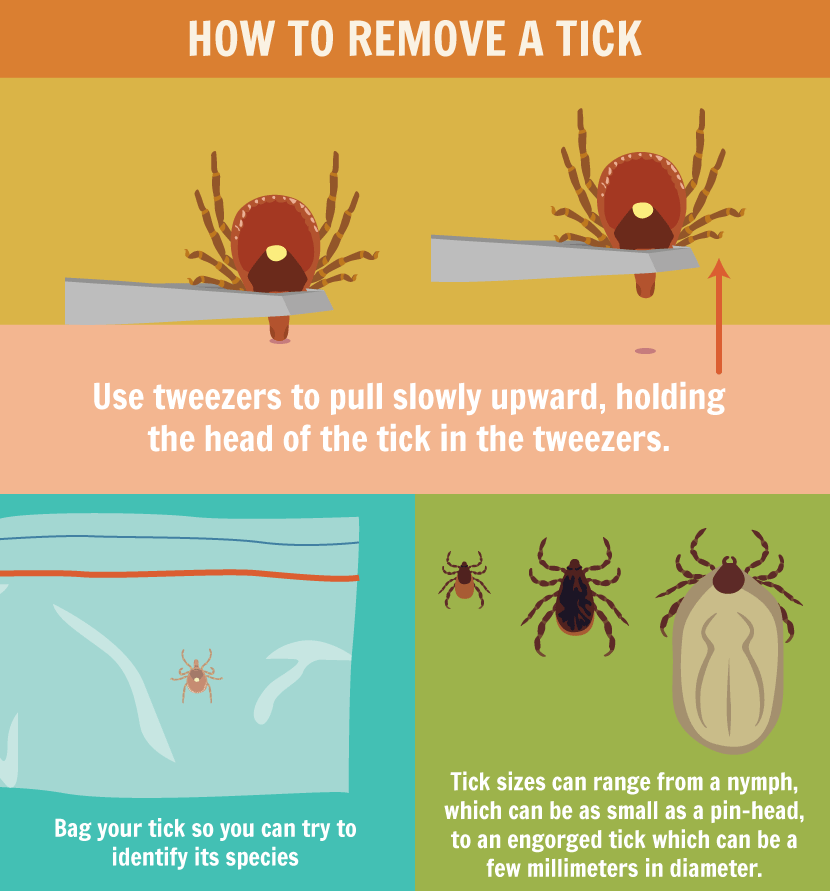In the United States there are nine different species of ticks known to transmit diseases to humans. Recently, a 10th species of tick was found for the first time. The 10 different species of ticks can be seen in the figure below along with their geographical location and the diseases they carry.
Figure 1: Species, location, and diseases associated with ticks.
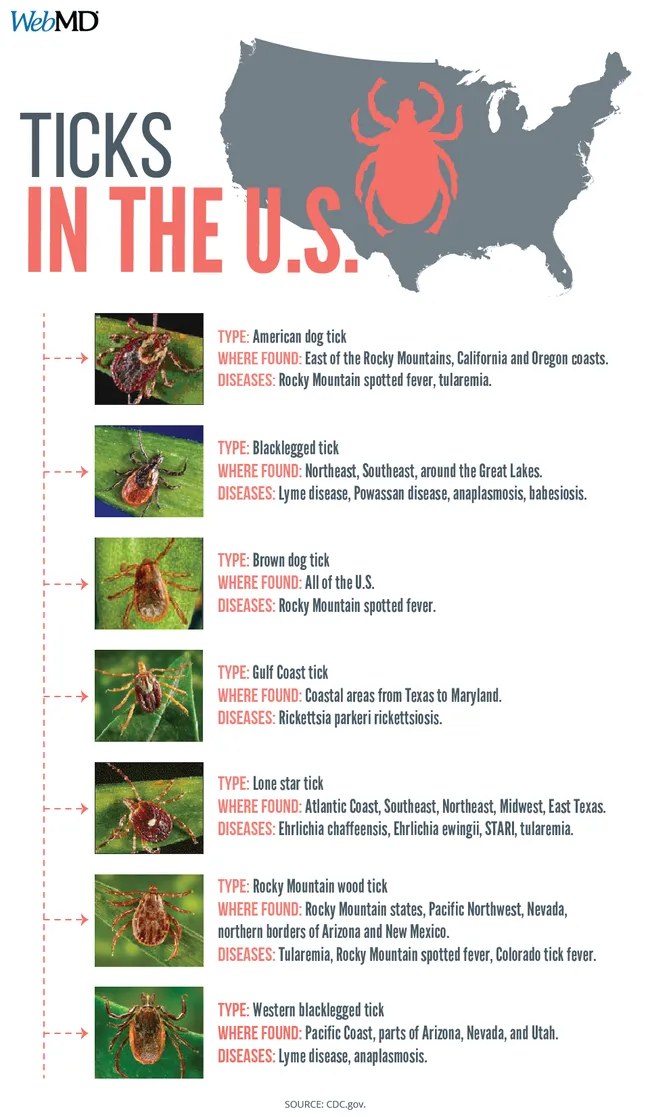
Each species of tick claims a different territory and can overlap each other. Each tick carries a specific type of disease that can be seen in figure 1. The incidence of tick bites can be found in every U.S state (excluding Hawaii). Tick bites are currently on the rise. According to the CDC, over 30,000 people are diagnosed with Lyme Disease (from tick bites) every year. The most common tick in the United States in the black-legged tick, which is known to carry Lyme disease (20-40%).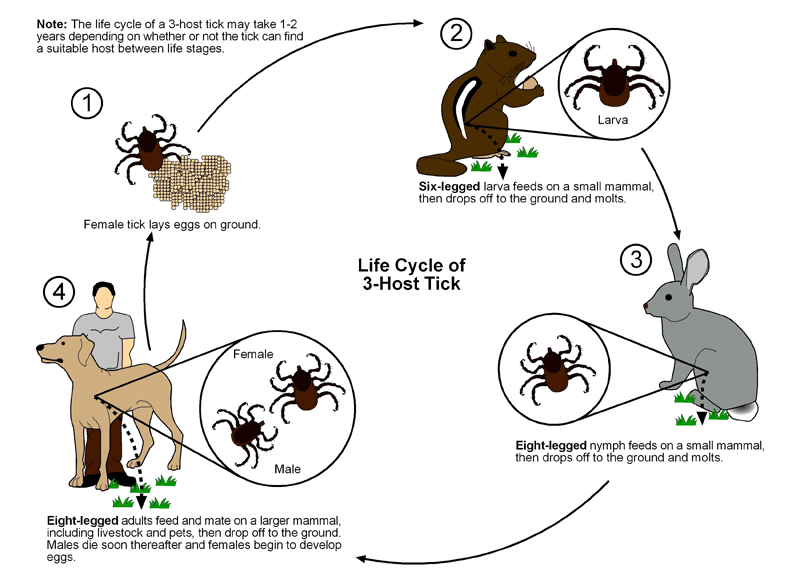
Sources of ticks
Ticks are commonly found in:
- grassy areas, woodlands, and hiking trails
- animal hosts (mice, deer, and squirrels)
- Indoors by catching a “ride home” (example on your pet)
The amount of ticks you have depends on where you life and other things including the number of host animals, temperature, rainfall, and humidity.
Mechanism of action
The way ticks spread disease is by “spitting germs” into your body. The tick actually eats a hosts blood to survive. Once attached to the host, the tick seeks out a “safe” spot to insert itself. The tick then inserts a feeding tube into the skin (these tubes have tiny barbs that keep them tightly attached to the skin). While the tick is sucking the blood (which can last several days) they are spitting saliva. If the tick is carrying a disease, the saliva is carrying it and that’s how it spreads into the body.
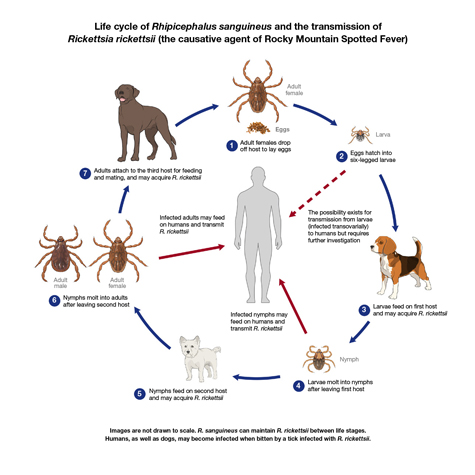
Lifecycle of a tick
Ticks reproduce. After feeding on a host animals blood the adult female can lay between 1,500-5,000 eggs. The eggs hatch several months later and the lifecycle begins. The female tick does not lay her eggs on the host, she drops them off somewhere sheltered for them to develop.
Ticks have a complex lifecycle that includes the egg, larva, nymph, and adult male/female. Each lifecycle requires blood meals to survive. Ticks come in three sizes throughout the course of their lifecycle.
- The larvae of the ticks are tiny (nearly microscopic) and do not spread pathogens
- The nymph is about the size of a poppy seed
- Adult ticks are about the size of a sesame seed and are easier to spot on the body

Tick Infestation (signs/symptoms/areas):max_bytes(150000):strip_icc()/what-to-know-about-tick-bites-4587783_V2-3d1cf872c1fd41a79b01372a08c75d9c.png)
Common signs and symptoms of a tick infestation include (but are not limited to):
- Vomiting
- Swelling at the site
- Burning
- Fever
- Chills
- Body Aches (similar to the flu)
- Headaches
- Fatigue
- Rash
Common areas that ticks attach to the body include (but are not limited to):
- Groin area
- Under the arms
- Inside the ears
- In the hair
- Inside the belly button
- Behind the knee
Diagnosis of a Tick Bite (Pathogen)
There are no specific tests to identify a tick bite or the type of the tick that was or is on the host. Typically, the doctor examines the entire body looking for a tick, rash, or any signs of tick-caused disease. If there is a tick identified the doctor will remove and determine which additional tests should be performed based on the suspected pathogen.
Treatment of a Tick Bite (Pathogen)
For a tick bite specifically, local cleaning and antibiotic cream are applied. Benadryl can be used if itching develops at the site. The treatment of the pathogen spread from the tick will require more factors to be considered including the tick type, length of time on the host, and symptoms. Specific treatment will then be administered based on the identity of the pathogen transmitted (ex: Lyme Disease)
Tick Removal Process
The best way to remove a tick is to wear gloves so that the pathogen doesn’t spread. Use a fine-tipped pair of forceps or tweezers to grab the tick at skin level. Grasp the tick as close to the skin as possible without “crushing” the tick. Apply a gentle pulling motion until the tick comes free. Twisting/Turning the tick can cause the head of the mouthparts to break off, increasing the chances of infection. Once the tick is removed, it should be placed in a lightly closed jar or taped to a piece of paper to show the doctor. Clean the bite area with soap, water, or alcohol and apply antibiotic cream if necessary. Finally, wash hands and all instruments used after completion.
Preventing bites from Ticks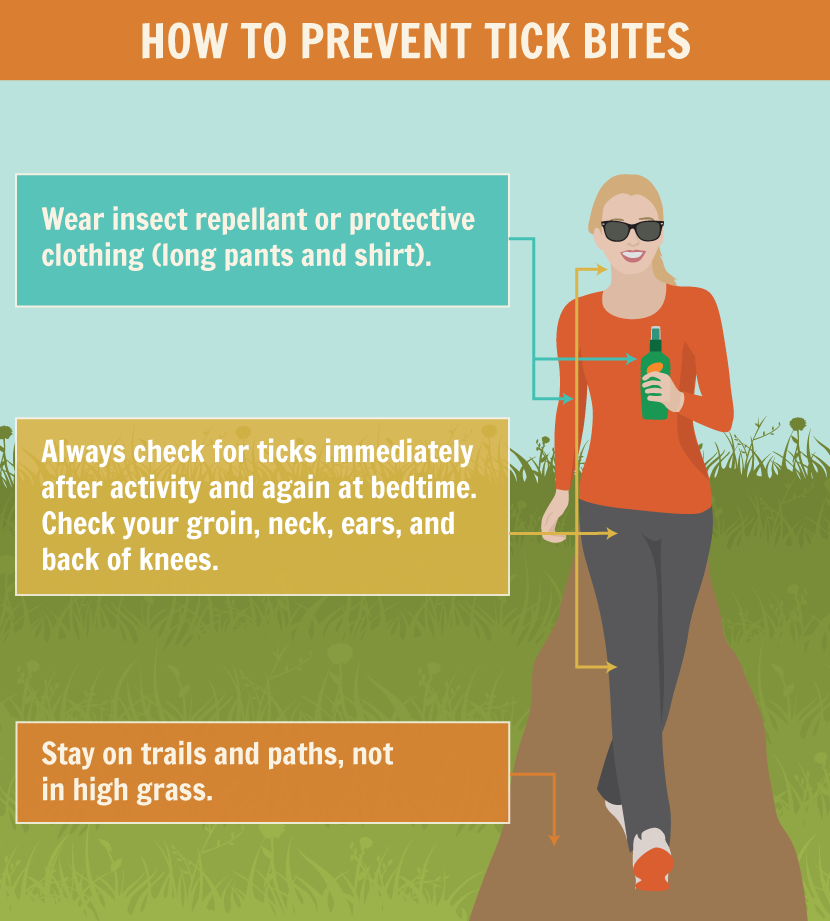
Below are the tick AWARE prevention steps:
- 1. avoid high traffic areas known to host tic
- wear clothing to protect from ticks (long sleeves, pants, socks)
- apply EPA-approved tick repellent
- remove clothing to protect from ticks
- examine yourself for ticks daily
Figures retrieved from:
- https://www.roanokeoutside.com/eeek-found-tick-now/. Accessed 7/11/19.
- https://www.verywellhealth.com/what-to-know-about-tick-bites-4587783. Accessed 7/11/19.
- https://www.cdc.gov/ticks/life_cycle_and_hosts.html. Accessed 7/11/19.
- https://forestryandland.gov.scot/visit/activities/walking/check-for-ticks. Accessed 7/11/19.
- https://www.merckmanuals.com/professional/injuries-poisoning/bites-and-stings/tick-bites. Accessed 7/11/19.
- https://www.dollargeneral.com/dg-health-antibiotic-cream-with-pain-relief-1-oz.html. Accessed 7/11/19.
Information derived from:
- https://www.merckmanuals.com/professional/injuries-poisoning/bites-and-stings/tick-bites. Accessed 7/11/19.
- https://www.cdc.gov/ticks/life_cycle_and_hosts.html. Accessed 7/11/19.
- https://www.health.com/mind-body/tick-borne-illness-facts. Accessed 7/11/19.
- https://www.sharecare.com/health/parasitic-infections/article/what-you-need-to-know-about-ticks. Accessed 7/11/19.
- https://time.com/4837891/what-are-ticks-lyme-disease/. Accessed 7/11/19.
- https://www.benenden.co.uk/be-healthy/lifestyle/everything-you-need-to-know-about-ticks/. Accessed 7/11/19.
- http://worldtravelers.org/health_facts_about_ticks.asp. Accessed 7/11/19.


